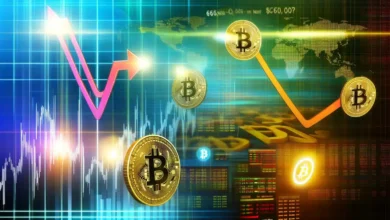XRP’s Transaction Speed:

XRP is widely recognized for its exceptional transaction speed, which is one of the key reasons it stands out in the cryptocurrency space, particularly when compared to other digital assets like Bitcoin and Ethereum. Designed primarily for financial institutions and cross-border payments, XRP’s transaction speed is a core component of its appeal. It was built to address the inefficiencies found in traditional financial systems and to improve upon the slow transaction processing times of many other cryptocurrencies.
How Fast Is XRP?
XRP’s network can settle transactions in 3 to 5 seconds, making it one of the fastest cryptocurrencies available today. This stands in stark contrast to Bitcoin, where transactions can take anywhere from 10 minutes to several hours depending on network congestion, and Ethereum, where transaction times can vary from several seconds to a few minutes.
XRP’s speed is largely due to the underlying architecture and consensus mechanism it uses.
Factors Behind XRP’s Speed:
- RippleNet Consensus Protocol: XRP operates on the RippleNet blockchain, which uses a unique consensus algorithm, the RippleNet Consensus Protocol. Unlike Bitcoin, which uses Proof of Work (PoW), XRP does not rely on miners solving complex mathematical puzzles to validate transactions. Instead, validators (independent entities) reach an agreement about the order of transactions, ensuring transaction validity without the need for mining.
In Ripple’s consensus model, the network is made up of trusted validators who confirm transactions quickly. This drastically reduces the time taken to confirm transactions compared to PoW-based systems like Bitcoin, where each block requires significant computational effort to solve, resulting in slower transaction finality.
- No Mining Required: XRP is not mined like Bitcoin or Ethereum. The entire supply of XRP was pre-mined at its inception, with 100 billion XRP coins created at the launch of the network. This eliminates the need for the time-consuming and resource-intensive mining process that Bitcoin and other PoW coins rely on to secure the network. Since there’s no mining process, transactions can be validated almost instantly, leading to much faster transaction speeds.
- Efficient Ledger Design: The XRP Ledger is designed specifically for high-speed transactions and to handle a large volume of transactions with minimal latency. The ledger’s infrastructure enables it to process 1,500 transactions per second (tps), a significant improvement over Bitcoin, which processes only 3-7 tps.
This high throughput is important for applications requiring real-time transaction processing, especially in sectors like international payments, remittances, and institutional financial services. XRP’s ability to handle such a large number of transactions in a short amount of time is a core advantage over many other cryptocurrencies.
- Settlement in Seconds: While the average Bitcoin transaction can take 10 minutes (due to block confirmation times), XRP’s transactions settle in seconds. The quick settlement time is highly beneficial for businesses and financial institutions that need immediate transaction finality for use cases such as cross-border payments or liquidity transfers. The speed is a critical factor for reducing the operational time and costs involved in cross-border payments.
- Optimized for Cross-Border Payments: XRP was specifically designed to facilitate cross-border payments, where transaction speed is crucial for the efficiency of global money transfers. In traditional systems, international transfers can take days to settle due to the involvement of multiple intermediaries (such as banks and payment providers), often incurring high fees. XRP’s fast transaction speed allows funds to move across borders almost instantly, significantly improving the speed and efficiency of global payments.
Comparison to Other Cryptocurrencies:
To further emphasize the speed of XRP, let’s compare it to some other popular cryptocurrencies:
| Cryptocurrency | Transactions Per Second (TPS) | Average Transaction Time |
|---|---|---|
| XRP | 1,500 TPS | 3-5 seconds |
| Bitcoin (BTC) | 3-7 TPS | 10 minutes |
| Ethereum (ETH) | 15-30 TPS | 10-20 seconds (Ethereum 2.0 will improve scalability) |
| Litecoin (LTC) | 56 TPS | 2.5 minutes |
| Bitcoin Cash (BCH) | 60-100 TPS | 10-15 minutes |
As illustrated, XRP is significantly faster than Bitcoin and many other cryptocurrencies when it comes to processing transactions. Its ability to settle transactions in just 3 to 5 seconds makes it one of the top choices for real-time payments.
Use Cases Benefiting from XRP’s Speed:
- Cross-Border Payments: XRP’s transaction speed is especially beneficial in cross-border payments, where the time taken to transfer money from one country to another can often take several days through traditional banking systems. XRP allows for instantaneous settlement of international transfers, making it a highly attractive solution for financial institutions seeking to improve the speed of their operations. This speed is further enhanced through Ripple’s On-Demand Liquidity (ODL) service, which enables real-time transactions and liquidity provisioning across borders.
- Micropayments and Everyday Transactions: XRP’s fast transaction time makes it a potential solution for micropayments—small payments often used in digital services, content distribution, or machine-to-machine transactions. With low transaction costs and near-instant finality, XRP could facilitate small-value transactions, like tipping content creators online or paying for digital services.
- Institutional Financial Services: For financial institutions, XRP’s speed is highly valuable for improving liquidity management and enabling real-time fund transfers. XRP’s scalability and transaction speed make it an ideal option for large institutions dealing with high volumes of transactions, as it can facilitate quick and secure transactions across their global networks.
- Remittance Services: Traditional remittance services often face significant delays and high fees due to intermediary banks and the legacy banking system. XRP’s speed and low cost make it a favorable alternative for remittance transfers, allowing people to send money to family members across borders without waiting days for their funds to be settled.
Limitations of XRP’s Speed:
While XRP’s transaction speed is undoubtedly one of its greatest strengths, there are some considerations to keep in mind:
- Validator Centralization: The consensus mechanism used by XRP, though efficient, is often critiqued for the centralization of validators. XRP’s consensus model relies on a smaller set of trusted validators compared to Bitcoin’s decentralized network of miners. Some argue that this can lead to concerns over the centralization of control over the network and whether it undermines the decentralized nature of cryptocurrencies.
- Regulatory Concerns: The ongoing legal battle between Ripple Labs and the U.S. Securities and Exchange Commission (SEC) has led to uncertainty over the future of XRP. If the court rules that XRP is a security, it could lead to regulatory complications that may affect its adoption and use. While this legal uncertainty does not directly affect the transaction speed itself, it may have implications for the broader adoption of XRP.
Conclusion:
XRP’s transaction speed is one of its most impressive features, making it a top contender for applications in cross-border payments, remittances, and institutional financial services. Its ability to settle transactions in 3 to 5 seconds gives it a distinct advantage over other cryptocurrencies like Bitcoin and Ethereum, both of which experience slower transaction times.
The RippleNet Consensus Protocol, which relies on a network of trusted validators rather than miners, allows XRP to process up to 1,500 transactions per second, ensuring scalability and efficiency. Combined with its low transaction costs, XRP is well-positioned to revolutionize sectors like global remittances and bank-to-bank transfers, offering businesses and individuals alike a faster and more affordable means of conducting financial transactions.
However, while XRP’s speed is its major selling point, concerns around centralization and ongoing regulatory challenges will continue to shape its adoption and role in the broader cryptocurrency ecosystem. Despite these challenges, XRP remains a powerful tool for those seeking a fast, scalable, and efficient solution to modern payment systems.



